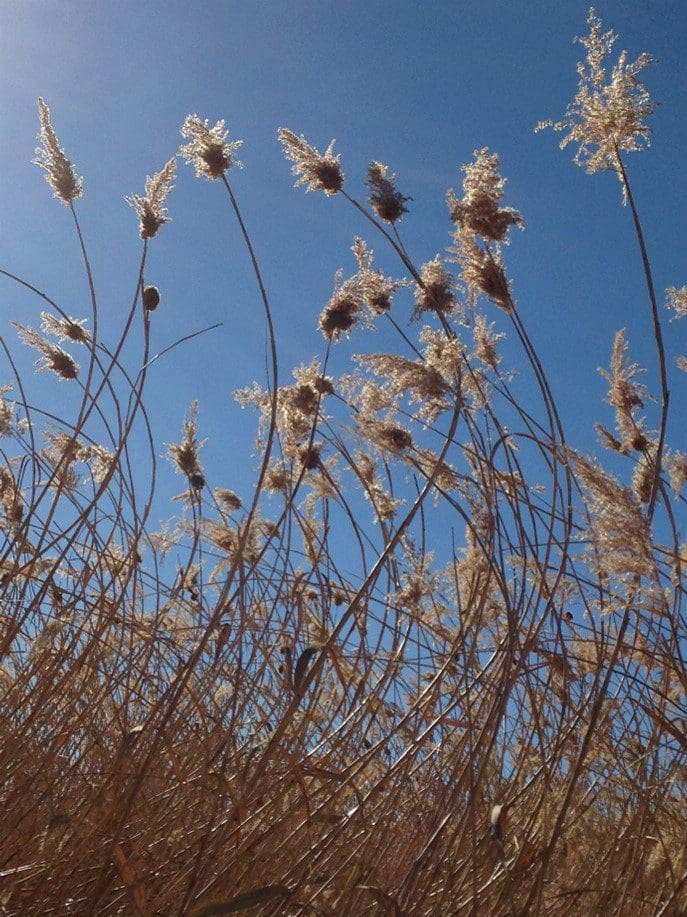The Common Reed

WHAT WETLANDS PARK PLANT IS “TALL, GREEN, AND HANDSOME” IN SUMMER, “TALKATIVE” ALL YEAR LONG, AND A MANAGEMENT CHALLENGE?
Common Reed is a giant member of the grass family (Poaceae) that occurs worldwide in wetlands from tidal areas and brackish and freshwater marshes to river edges, lake and pond shores, roads and ditches. At Clark County Wetlands Park, it towers over the heads of walkers, bending in the smallest breeze, with stems topped with waving feathery seed heads that may reach fifteen feet tall.
Two species of common reed (and one hybrid of the two) thrive at the Park. One species is native to North America. Arrow shafts, musical instruments, mats, and ceremonial objects made from it have been found in archaeological sites dating back thousands of years. The second species is a European native. It probably was introduced accidentally from ship ballast in the late 1700s or early 1800s and has rapidly colonized suitable wet places across the continent.
I fell in love with common reed when I first came to Wetlands Park. The wide, green expanses wave so beautifully when the wind blows, making sounds from whispers, to rustles, to whooshes – depending on the movement of the air. Among the reeds, the tall stalks make me feel small and well hidden – not a feeling I often get in the surrounding open spaces of the dry desert, and the expanses of green just make me feel cooler.
Wetlands explorers can hear the furtive rustles of other, smaller creatures moving or hiding in the reeds nearby, mostly well hidden. A close look along the stalks and beneath the leaves in spring through fall reveals a tiny universe of aphids and ants, spiders and ladybugs, all going about their business.
Common reed can be very relaxing. And patches of common reed can be great Park program sites, as visitors to the Spooky Maze at Halloween time already know.
But like many grasses, Common Reed can easily get out of control. Its dense root and rhizome system allows it to crowd out other plant species and form a “monoculture” – an area of only reeds. Monocultures are not as good for wildlife as more diverse habitats like riparian woodlands.
Because reed is a perennial and grows new from the roots up every year, dried “leftover” leaves and stalks from previous years accumulate. They make great fuel, increasing the potential for wildfires. At the Park, vigorous management strategies including mowing and mulching, and herbicide applications may be used to keep reed areas in balance with the Park’s other desirable habitats. Park staff are always experimenting to find the best control methods.
So as you walk in the Park, remember that common reed is a part, but only a part, of its habitat balance. Enjoy the stands of reed for their medley of relaxing sounds, for their cooling green in the summer, and for the joy of guessing who else is passing through the “reed forest” with you!
Please enjoy these YouTube videos!
Common Reed wetland areas
www.youtube.com/watch?v=A-dD9cVWtvo
Clark County Wetlands Park Spooky Maze
www.youtube.com/watch?v=31EM8Jn2iWw
Identifying Common Reed
www.youtube.com/watch?v=to6vRNhwLio
– By Chris Leavitt, President; photo by Gail Raffel
